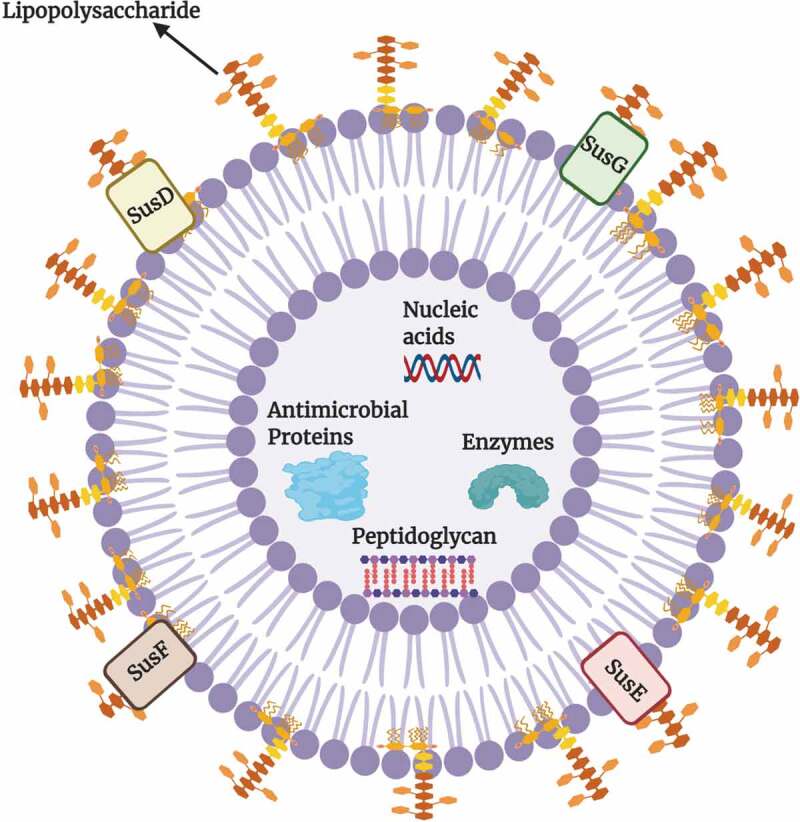Figure 3.

Structure of an Outer membrane vesicle (OMV) of Bacteroides.
The composition of the lipid bilayer of the OMV retains the same asymmetry as observed for the outer membrane of the parental bacterial cell. These vesicles can be carriers of a large repertoire of bacterial cargos such as i) nucleic acids, ii) fragments of peptidoglycan, iii) various enzymes such as glycoside hydrolases, iv) capsule components such as polysaccharide A (PSA), v) antimicrobial proteins such as Bacteriodales secreted antimicrobial proteins (BSAPs) that contain a membrane attack complex/perforin domain, and vi) Sus-like components. The OMVs of Bacteroides may contribute to both health and disease of the human host. These vesicles may transfer virulence factors to target cells residing in distant locations in the gut. The components of OMVs assist in the breakdown of complex polysaccharides, proteins, and lipids, thus supporting the growth of other bacteria and maintaining gut homeostasis.
